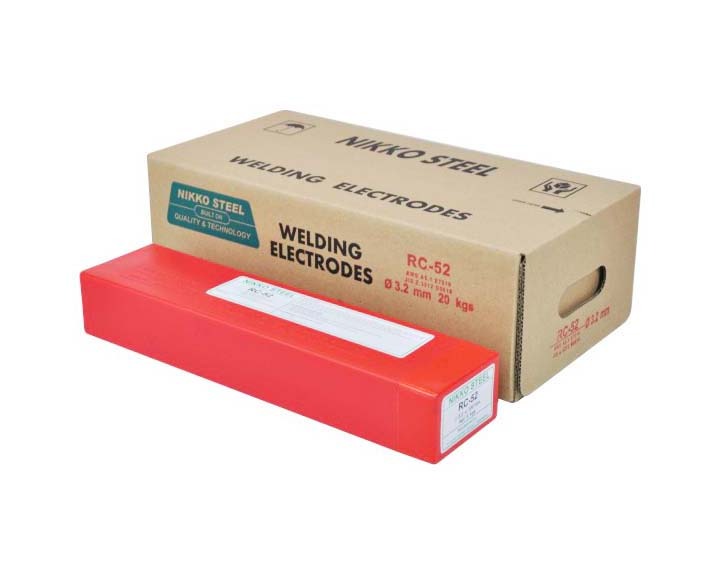BASIC LOW HYDROGEN ELECTRODE FOR WELDING STRUCTURAL STEELS EITHER ON SITE OR WORKSHOP FABRICATION
RC-52

CLASSIFICATION
AWS A5.1 E7016 | EN ISO 2560-A E 46 3 B | JIS Z 3212 D5016
PRODUCT DESCRIPTION
The design emphasis of the chemically basic flux is engineered to ensure the optimum weld metal properties demanded by the specification are fully met. The basic flux containing the appropriate alloying elements but minimal iron powder, is extruded onto a high purity ferritic core wire and bound with a blend of silicates that ensure both coating strength and a coating resistant to subsequent moisture absorption
WELDING FEATURES OF THE ELECTRODE
The chemical nature of the flux together with its controlled coating factor allows the electrode to be used at relatively low amps. This factor together with the fairly fluid but quick freezing slag facilitate vertical up welding including controlled penetration root runs. Overall the arc is very stable, slag detachability is good, fillet welds are slightly convex and metal recovery is some 98% with respect to weight of the core wire
APPLICATIONS AND MATERIALS TO BE WELDED
Medium and high tensile carbon-manganese steels with UTS of up to 510 N/mm2 max. Typical grades are : BS 1449 plate and sheet, BS 4360 grades 43A and 43C, Lloyds A & D ship steel, BS 4360 grade 50B, Lloyds grades AH and DH, BS 3059 and BS 3601 grade 320–410 AP15L A-B and X42, BS 4360-50B-50C-50D, BS 1501-151 430-490, BS 3602-410-460. Such steels are used in ship construction, bridge building and pressure vessel work as well as general construction work.
WELDING AMPERAGE AC and DC
OTHER DATA
Electrodes that have become damp should be re-dried at 150oC for 1 hour
APPROVED BY
LR – Grade 3Y H5